iPhone Planets; Planets on Dome;
D850 Galaxies & Nebulae
Posted: 4 August 2018
Wednesday, 1 August 2018, was mostly cloudy with a brief thundershower mid-afternoon (0.12"). That night there were strong thunderstorms in southern Arizona and one of my webcams captured a lot of lightning:
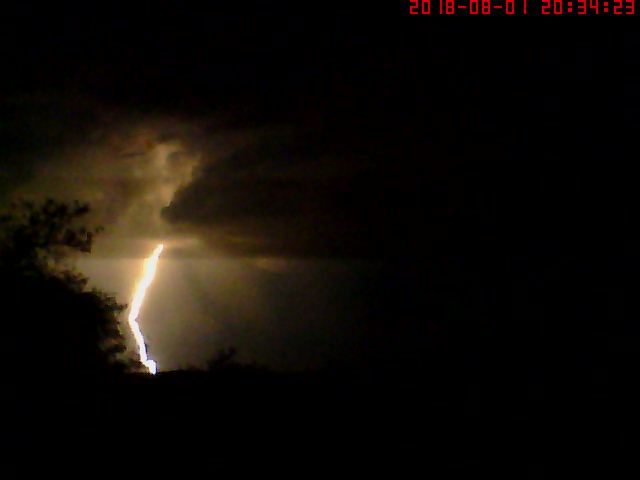


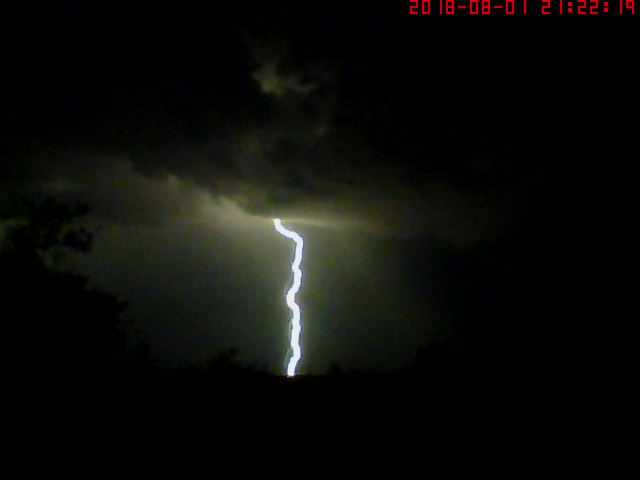


Cloudy skies continued on Thursday, 2 August. There was a little storm west of Oracle before sunset:

On some past reports I have mentioned locking the focus on the 12" LX600 telescope even though there is no mirror lock on the 12" LX600. The story can now be told in more detail. On Friday, 3 August, I posted my review of the just released ScopeStuff LX600 12" Primary Mirror Lock. The Primary Mirror Lock was developed by ScopeStuff using a concept which I created.
The sky dawned mostly clear but hazy on Friday, 3 August.
|
Open: Friday, 3 August 2018, 1900 MST Temperature: 87°F |
Session: 1266 Conditions: Mostly clear |
Equipment Used:
12" f/8 LX600 w/StarLock
2" 24mm UWA eyepiece
2" 9mm 100° eyepiece
Camera:
iPhone 8 Plus
D850 DSLR
1907 MST: LX600 ON, StarLock OFF, High Precision OFF.
Viewed the planet Venus, 102X and 271X.
Mounted the iPhone 8 Plus on the 2" 9mm eyepiece and did some afocal 271X slo-mo (240fps) Camera app video recordings. This is a stack of 2484 video frames:

1922 MST: sunset.
1925 MST: viewed the planet Jupiter, 271X. Four moons were visible.
1938 MST: back to Venus, 271X.
1940 MST: set up the D850 DSLR on the observatory patio in preparation for imaging the visible planets projected onto the observatory dome:
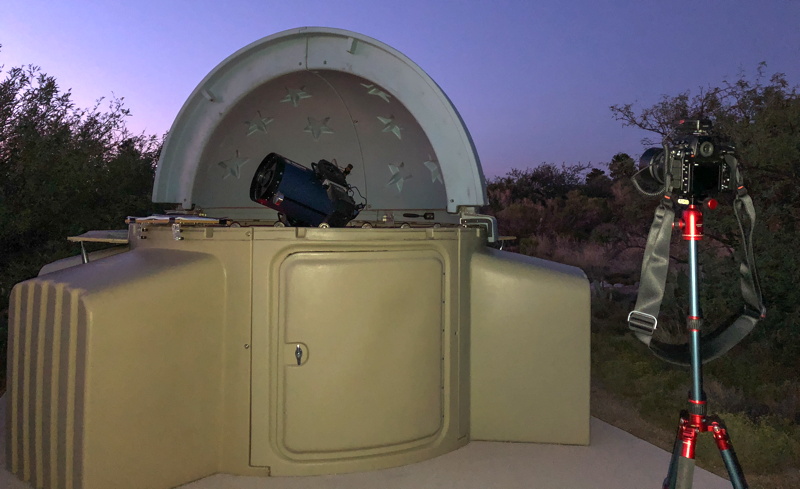
2010 MST: Mars was visible over the hill to the southeast. Four planets (Mars, Saturn, Jupiter, and Venus) were now visible to the naked eye.
2025 MST: began imaging the planets on the observatory dome.
Venus

Jupiter

Saturn

Mars

Mouseover or tap on images for pointers to the planets
Returned to the observatory and imaged the planets Jupiter and Saturn using the iPhone 8 Plus afocal 271X:
Jupiter (NightCap Camera, stack of 920 video frames, ISO 25, 1/100sec)

Saturn (Camera, stack of 2488 video frames)

2104 MST: began preparing to image some galaxies for my Extragalactic Supernova Project. Mounted the D850 DSLR at prime focus of the 12" telescope. 2112 MST: High Precision ON, StarLock ON. Tried to get a StarLock lock on for M64 (Black Eye Galaxy), but it was too low in the western sky. I will have to wait a few months before trying to image it. I then did some other galaxy imaging (StarLock autoguided, 5 minutes, ISO 6400, White Balance 5000K).
NGC5457 (M101)
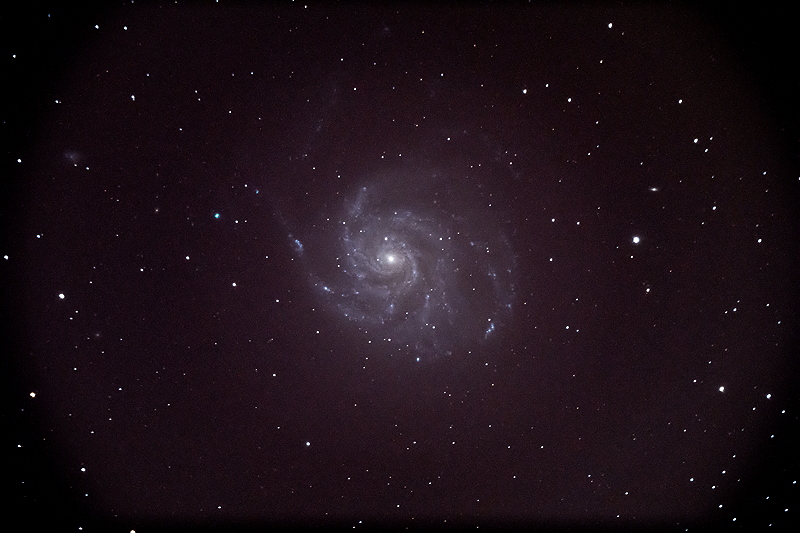
NGC5866 (M102)

NGC6015

NGC6503

NGC6946

Added a focal reducer and imaged NGC6960 (Veil Nebula), StarLock autoguided, 5 minutes, ISO 6400, WB 5000K:

I slewed to IC1396 (Elephant Trunk Nebula) and did a StarLock autoguided, 5 minutes, ISO 6400, WB 5000K, exposure. Unfortunately, the nebula was not centered (appears at the right of the frame):

I hope to re-image it on the next session.
2249 MST: StarLock OFF, High Precision OFF. Ended DSO imaging.
2301 MST: viewed Mars, 102X and 271X. Seeing was not good. Only the South Polar Cap and the North Polar Hood were visible to the eye (no filters used).
Mounted the iPhone 8 Plus and did some NightCap Camera video recordings. This is a stack of 921 frames (ISO 22, 1/90sec):
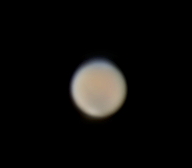
2331 MST: LX600 OFF.
|
Close: Friday, 3 August 2018, 2331 MST Temperature: 80°F |
Session Length: 4h 42m Conditions: Clear |
Comments are welcome using Email. Twitter users can use the button below to tweet this report to their followers. Thanks.
Cassiopeia Observatory Home Page
Copyright ©2018 Michael L. Weasner / mweasner@me.com
URL = http://www.weasner.com/co/Reports/2018/08/04/index.html
